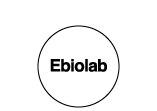
An overview of digital art in Spain
Rosina Gómez-Baeza. Director of LABoral Centro de Arte y Creación Industrial, Gijón
Art, Science, Technology and Society: these are the four fundamental pillars upon which rests banquete_nodos y redes (banquet_nodes and nets), the thirteenth exhibition presented by LABoral since its inauguration merely 14 months ago. That these four fundamentals are also the cornerstones underpinning our activities as an Art and Industrial Creation Centre is no coincidence. LAB was created in order bring art, design, culture, industry and economic development into alliance, as established from the start by the Project Mission that still guides our every step. We are working to make LABoral a place for interaction and dialogue between art, new technologies and industrial creation. We understand that by continually fostering transversality between the most diverse forms of artistic, technical and scientific expressions we will be able to contribute to the dissemination and use of new technological resources, thereby facilitating interrelationships of the visual culture emerging today in Asturias, other communities in Spain and the widest range of countries around the world.
These are interesting times in which we live, as is shown by the ample variety of artistic expressions that this transversality potentiates. Technology has always been of use to art. As a living being, the idea of art has evolved – just as science has done – spurred on by concrete political, social and cultural contexts. Art has always revealed itself as a way to obtain knowledge.
banquete_ shows this most clearly by offering an overview, a penetrating X-Ray, of digital art in Spain today. With thirty artists and thirty-five art works, curator Karin Ohlenschläger invites us to a profound exploration of that place where experiences and fields of knowledge open up, form connections with one another and converge in the shared pattern of a network that currently characterises our global society.
Collaboration and networking: these are the objectives that animate each and every one of the programmes organised by LAB, as can be seen in some of the data that reflect our activity during the as yet brief existence of the Centro de Arte y Creación Industrial. Since March 2007, LAB has organised thirteen exhibitions featuring two hundred twenty-two art works by three hundred ninety-two artists. We have had remarkable support in carrying out this task: the invaluable collaboration of twenty-five internationally renowned curators. We have also established agreements and collaborative efforts with one hundred museums, centres and cultural institutions around the world. In educational terms, we have organised eight international symposia or conferences, thirty-one professional workshops and, lastly, twenty-three creation and didactic workshops, intended for young people and their families, in the assumption our responsibility as an educational centre for future generations. Our goal to become a Centre of Production translates today into the thirty-six art works that we have produced. We will also be delving deeply into the research domain with upcoming launch of Creatic, a laboratory of creativity and innovation intended for university students. Our programme has also included the celebration of highly successful concerts and festivals, experimental sessions of video and dance and the bestowal of awards intended to encourage the creation and development of new artistic projects.
It is important to mention that none of this would have been possible without the iron-clad support given to us by our Board of Patrons, to whom I would like to give my thanks for their involvement and support, allowing LAB to consolidate itself as a centre of international relevance in the domain of new media art and industrial creation. We are also grateful for the collaboration of the Spanish Government, through the Ministries of Culture, of Industry, Tourism and Trade and of Foreign Affairs and Cooperation.
Of course, I also extend this gratitude and acknowledgement to SEACEX and Fundación Telefónica who , together with LAB, are producing banquete_nodos y redes and, further, have made it possible for the exhibition to be shown from March to June 2009 in ZKM, Center for Art and Media in Karlsruhe, Germany. This cooperation clearly demonstrates our shared pledge to increase and consolidate the presence of contemporary Spanish creation in the international marketplace and is a clear sign of the importance of networking -which is a lso manifest in the support they give to us.
